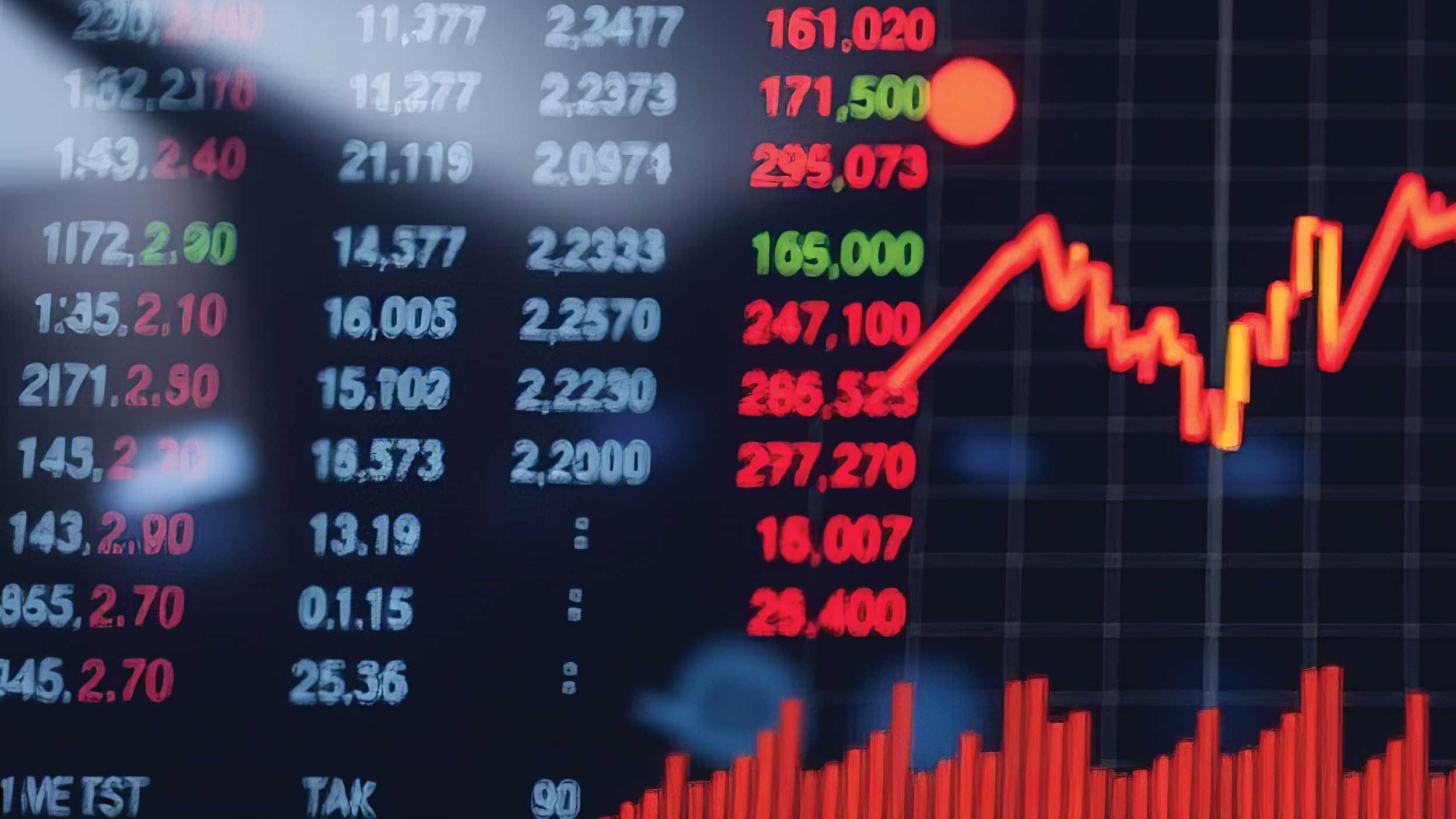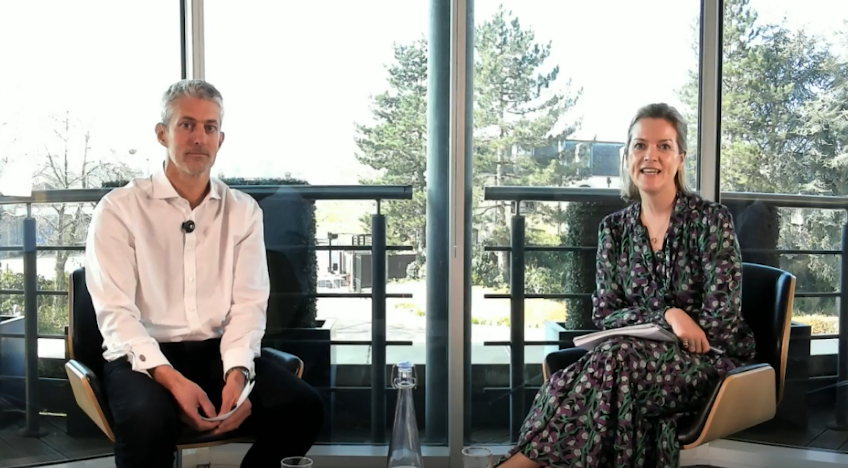
Where you’ll find the cheapest and most expensive stock markets in the world
Find out what regional stock markets look cheap or expensive and learn from our experts about investing opportunities and risks around the world.

When investors try to avoid the worst days, they tend to miss some of the best days too, which can have a big impact on longer-term returns.
There are many businesses on our shopping list that we have been waiting to buy, and many great businesses are on sale.
As stock pickers, we believe we are fortunate to be able to take advantage of these situations and make decisions for the long-term benefit of investors.
Hear how our Global Equities team is approaching this period of stock market volatility and the distinct areas of opportunity they’re finding around the world.
00:00:07:01 - 00:00:08:16
Hi, I'm Stephen Anness,
00:00:08:16 - 00:00:11:26
Head of Global Equities here at Invesco in Henley.
00:00:12:23 - 00:00:15:00
I just wanted to provide a bit of an update, given
00:00:15:00 - 00:00:18:00
the market volatility that we have seen in recent days,
00:00:18:06 - 00:00:19:03
to give you all views
00:00:19:03 - 00:00:22:03
and to tell you how we're thinking about it as a team.
00:00:22:19 - 00:00:24:19
I think the first thing to say is that
00:00:24:19 - 00:00:26:24
clearly there's volatility in the news flow
00:00:26:24 - 00:00:28:01
that we're seeing around tariffs.
00:00:28:01 - 00:00:31:16
And the potential retaliations are quite unnerving for investors.
00:00:31:16 - 00:00:33:22
And we've seen markets react to that.
00:00:33:22 - 00:00:36:08
Markets hate nothing more than uncertainty.
00:00:36:08 - 00:00:39:05
And we have an awful lot of uncertainty at the moment.
00:00:39:05 - 00:00:41:03
It would be impossible for me to stand here
00:00:41:03 - 00:00:44:03
and tell you that we know how this is going to evolve.
00:00:44:11 - 00:00:47:14
However, what I can tell you is what we're doing about it as a team.
00:00:48:05 - 00:00:51:01
We've seen many periods of volatility before.
00:00:51:01 - 00:00:53:15
As a team, we've lived through the GFC.
00:00:53:15 - 00:00:57:11
The COVID period, Industrial recessions in 2015 and 16,
00:00:57:17 - 00:01:01:01
and of course the European Debt Crisis in 2010 and 11.
00:01:01:26 - 00:01:04:01
And through those periods, we've remained consistent
00:01:04:01 - 00:01:07:09
in the way that we approach this kind of volatility.
00:01:07:25 - 00:01:10:19
So what are we doing about this as a team?
00:01:10:19 - 00:01:13:19
Well, firstly we're focusing on the long term.
00:01:13:24 - 00:01:16:15
We're trying to invest on a 3 to 5 year view.
00:01:16:15 - 00:01:18:07
And we're trying to find the best companies
00:01:18:07 - 00:01:19:11
with the best management teams
00:01:19:11 - 00:01:22:21
that we think could be substantially bigger over that period of time,
00:01:23:10 - 00:01:26:10
where the valuations are really quite attractive.
00:01:26:13 - 00:01:29:20
Secondly, that we have to retest our investment thesis.
00:01:30:02 - 00:01:33:11
There are clearly companies which will be impacted by the news.
00:01:33:21 - 00:01:35:03
And there are also companies, though,
00:01:35:03 - 00:01:37:17
which may be advantaged by this news,
00:01:37:17 - 00:01:40:17
where they don't perhaps have a direct tariff impact.
00:01:41:11 - 00:01:43:09
And finally, we're concentrating
00:01:43:09 - 00:01:46:09
our capital in our very best ideas.
00:01:46:10 - 00:01:48:06
This market has thrown up a number
00:01:48:06 - 00:01:51:27
of really exciting opportunities in businesses that we really like.
00:01:52:06 - 00:01:55:05
And so what we're doing is we're going line by line, company
00:01:55:05 - 00:01:55:24
by company,
00:01:55:24 - 00:01:58:03
trying to find the best opportunities that we can
00:01:58:03 - 00:02:00:09
and make sure that the portfolio
00:02:00:09 - 00:02:04:00
has sufficient allocation of capital toward those opportunities.
00:02:05:11 - 00:02:08:13
So clearly there are a number of things for us to consider.
00:02:08:26 - 00:02:11:23
Firstly, there are the first order impacts of the tariffs.
00:02:11:23 - 00:02:14:23
Which companies are impacted by them directly
00:02:14:23 - 00:02:17:23
and which companies may even be advantaged by them.
00:02:17:25 - 00:02:19:26
Secondly, though, we do need to consider
00:02:19:26 - 00:02:20:21
the second order
00:02:20:21 - 00:02:21:11
impacts of this,
00:02:21:11 - 00:02:24:13
there will be economic consequences to this uncertainty.
00:02:24:22 - 00:02:27:22
Companies will likely delay investment spending.
00:02:27:24 - 00:02:30:17
They may well change their hiring plans as well.
00:02:30:17 - 00:02:33:14
And so we're likely to see, I think, a slowdown
00:02:33:14 - 00:02:36:16
in the results of many companies in the coming period.
00:02:37:24 - 00:02:40:25
So what we've been doing is reallocating our capital
00:02:40:25 - 00:02:41:28
within the portfolio.
00:02:41:28 - 00:02:43:03
We have a number of companies
00:02:43:03 - 00:02:46:05
which have performed actually quite well during the initial phases
00:02:46:05 - 00:02:47:17
of this market volatility,
00:02:47:17 - 00:02:50:17
and we've also seen some where we think the share prices have perhaps
00:02:50:17 - 00:02:51:11
fallen further
00:02:51:11 - 00:02:54:13
than is really likely to be the impact of what we're seeing.
00:02:54:20 - 00:02:58:02
And so we've been steadily reallocating capital within the portfolio.
00:02:58:28 - 00:03:01:11
As I mentioned at the outset of this video,
00:03:01:11 - 00:03:04:29
we have seen a number of periods of volatility before, and often
00:03:04:29 - 00:03:06:04
that volatility has come
00:03:06:04 - 00:03:06:25
with what appear
00:03:06:25 - 00:03:09:04
at the time to be, frankly, very scary headlines,
00:03:09:04 - 00:03:10:19
which is what we're seeing at the moment.
00:03:12:01 - 00:03:12:25
The key point that
00:03:12:25 - 00:03:16:25
I'd like to make is that in all of those periods of time, volatility
00:03:16:25 - 00:03:18:06
has created opportunity
00:03:18:06 - 00:03:21:29
for us as active fund managers to deploy that capital into the fear
00:03:22:08 - 00:03:23:10
and ultimately
00:03:23:10 - 00:03:24:27
try and find those opportunities
00:03:24:27 - 00:03:25:27
which are likely to generate
00:03:25:27 - 00:03:28:27
good returns for our clients over the years ahead.
00:03:29:09 - 00:03:32:12
It's important to note that, as I mentioned, none of us know how
00:03:32:12 - 00:03:33:22
this is likely to pan out,
00:03:33:22 - 00:03:36:22
and therefore what we are trying to do is build a portfolio
00:03:36:27 - 00:03:40:14
of resilient, growing companies run by excellent management
00:03:40:14 - 00:03:43:23
teams that we think can perform in a number of different scenarios.
It’s hard to believe it’s been a little more than one week since President Trump announced his ‘Liberation Day’ tariff plans. We wanted to update you on how we’ve approached this tumultuous period for markets and emphasise some lessons learnt from the previous drawdowns we’ve experienced.
Firstly, whether they’re driven by economics, geopolitics or valuations, stock markets are volatile, and they experience falls in almost every calendar year.
Year |
Year |
Year |
|||
|---|---|---|---|---|---|
1978 |
-14% |
1994 |
-8% |
2010 |
-16% |
1979 |
-10% |
1995 |
-3% |
2011 |
-19% |
1980 |
-17% |
1996 |
-7% |
2012 |
-10% |
1981 |
-18% |
1997 |
-11% |
2013 |
-6% |
1982 |
-17% |
1998 |
-19% |
2014 |
-7% |
1983 |
-7% |
1999 |
-12% |
2015 |
-12% |
1984 |
-13% |
2000 |
-17% |
2016 |
-10% |
1985 |
-8% |
2001 |
-29% |
2017 |
-3% |
1986 |
-9% |
2002 |
-33% |
2018 |
-19% |
1987 |
-34% |
2003 |
-14% |
2019 |
-7% |
1988 |
-7% |
2004 |
-7% |
2020 |
-34% |
1989 |
-7% |
2005 |
-7% |
2021 |
-5% |
1990 |
-19% |
2006 |
-7% |
2022 |
-23% |
1991 |
-6% |
2007 |
-10% |
2023 |
-18% |
1992 |
-6% |
2008 |
-48% |
2024 |
-10% |
1993 |
-5% |
2009 |
-27% |
2025 |
-18% |
Source: StockWhale, Invesco as at 8th April 2025
Past performance is not a guide to future returns
It’s not just the S&P 500 — all markets experience drawdowns. But despite all of these drawdowns, as long as investors remained invested, they made very attractive long-term returns; from 1/1/1980 to 04/07/2025 the MSCI World Index has returned about 9% p.a. or 4,851%!1
The key is “Time in the market, not timing the market”. Often the best days follow some of the worst volatility, so when investors try to avoid the worst days, they tend to miss some of the best days too. And missing just some of the market’s best days can have a big impact on longer-term returns, as evidenced by the chart below:
Past performance is not a guide to future returns. Source: Bloomberg, as at 31 December 2024. Total returns in GBP. For illustrative purposes only. It is not possible to invest directly in an index.
Secondly, these periods provide stock pickers with the opportunity to add significant value. Selling is often indiscriminate, and we try to take advantage of this selling while being mindful of the risks and uncertainty of the macro environment. In simple terms, opportunity and uncertainty go hand in hand for active managers.
Our approach during the recent tariff-related volatility can be distilled into three key points:
We have found three distinct areas of opportunity thus far:
We appreciate that some of the headlines are scary for investors, and there is a great deal of uncertainty regarding the economic and political outcomes of the current situation. However, our experience through 2008/09, the European debt crisis, Covid, and the 2022 tech wreck have taught us that the equity market has always acted as a discounting mechanism, with future information quickly assimilated into stock prices. As stock pickers, we believe we are fortunate to be able to take advantage of these situations and make decisions today that will materially benefit the long-run returns for investors.
Stephen Annes is a co-fund manager of the Global Equity Income & Growth strategy.

Find out what regional stock markets look cheap or expensive and learn from our experts about investing opportunities and risks around the world.

Stephen Anness and Joe Dowling discuss why strong company fundamentals drive long-term performance, emphasizing the importance of focusing on business quality over short-term market turbulence caused by geopolitical events.

In our recent European equities outlook, Georgina Millar and Oliver Collin discuss Europe's market turnaround, Germany's vote, and the improving economic outlook. Highlighting Invesco's active investing targets, specific themes, and the positive outlook for 2025.
1 Source: Datastream returns for the MSCI World Index from 1 January 1980 to 7 April 2025
2 Source: Bloomberg as at April 2025
The value of investments and any income will fluctuate (this may partly be the result of exchange rate fluctuations) and investors may not get back the full amount invested.
Data as at 10.04.2025, unless otherwise stated. This is marketing material and not financial advice. It is not intended as a recommendation to buy or sell any particular asset class, security or strategy. Regulatory requirements that require impartiality of investment/investment strategy recommendations are therefore not applicable nor are any prohibitions to trade before publication. Views and opinions are based on current market conditions and are subject to change.
EMEA4397741